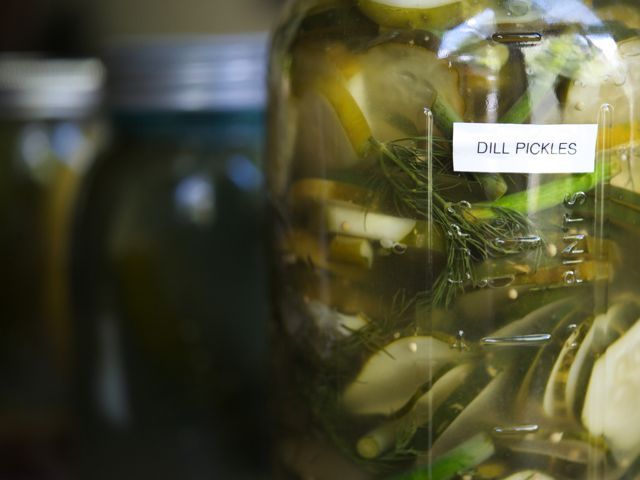7.2.10 The Real Dill
As promised, here is the recipe for lacto-fermented dill pickles. In case you've forgotten, that means they are preserved with salt and bacteria—there's no boiling of the brine or anything. It really couldn't be easier. With some cucumbers, some dill, a few cloves of garlic, salt and water, the magic of pickling takes place. They sit out on the counter for about 3 days while the lactobacillus does its thing. I made both spears and chips, and I think I'm going to like them even better after they've been refrigerated. I like that cold, crisp snap. Today I'm making ice cream and popsicles, so I probably won't post again until Monday, when you'll get a chance to see how the Pulled Pork Fest turned out. I hope you have a wonderful holiday weekend, full of sunshine and friends and treats and relaxation. Life, liberty and the pursuit of happiness: it's what we're all still entitled to, from sea to shining sea.

Dill Pickles
makes about 1 quart
- — 4-5 Kirby cucumbers, or other type of pickling cuke
- — 5 garlic scapes, chopped into 1-2" pieces; or 2-3 whole cloves garlic, peeled
- — 3-5 large sprigs fresh dill
- — 1 tablespoon yellow mustard seeds
- — 1 tablespoon sea salt
- — 4 tablespoons whey (or substitute an additional tablespoon of salt)
- — 1 cup water
Wash the cucumbers. Slice off both ends and discard. For spears, slice them lengthwise. For chips, slice into 1/4"-thick rounds.
Place cucumbers, dill, mustard seeds and garlic scapes or cloves into a quart-sized wide-mouth mason jar. Mix salt and water in a small bowl and pour into the jar. Add additional water, if needed, so that the vegetables are completely covered and the liquid comes to about 1" below the top of the jar.
Screw the lid on tightly and keep at room temperature for three days. The liquid will become cloudy and a bit fizzy; this is what you want. Now you can store in the fridge or move to your cold cellar.
 Download Recipe
Download Recipe







9 Comments